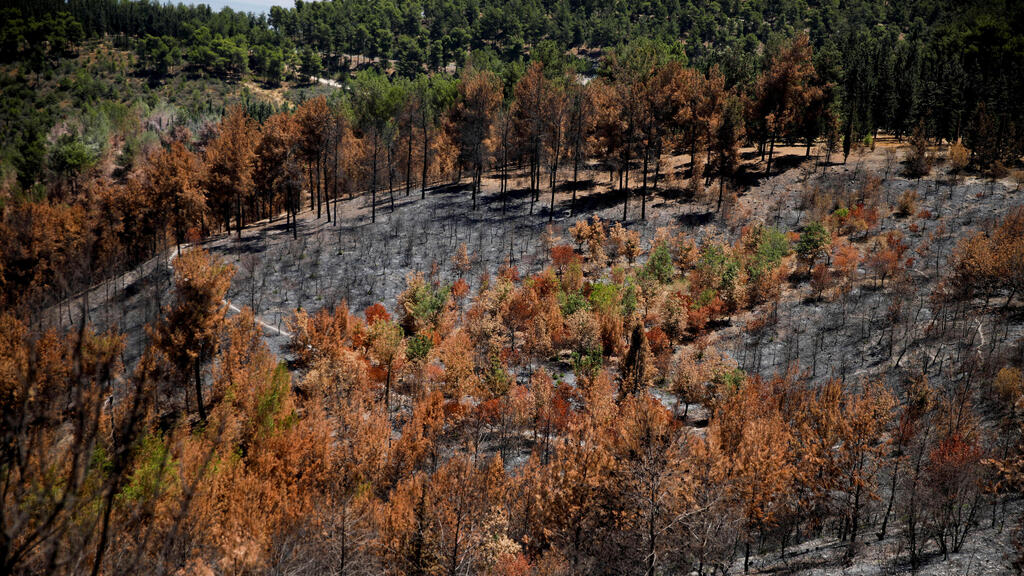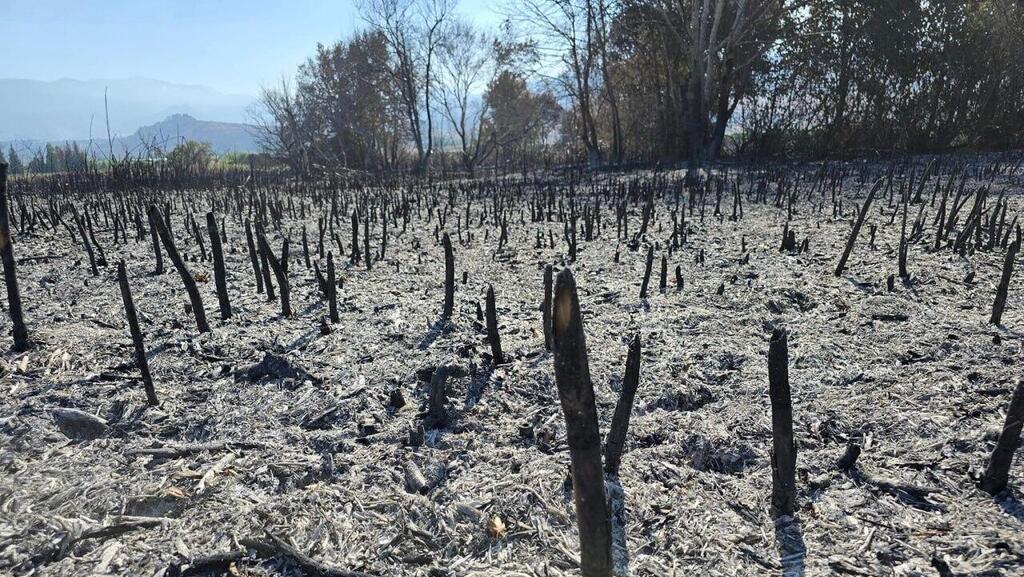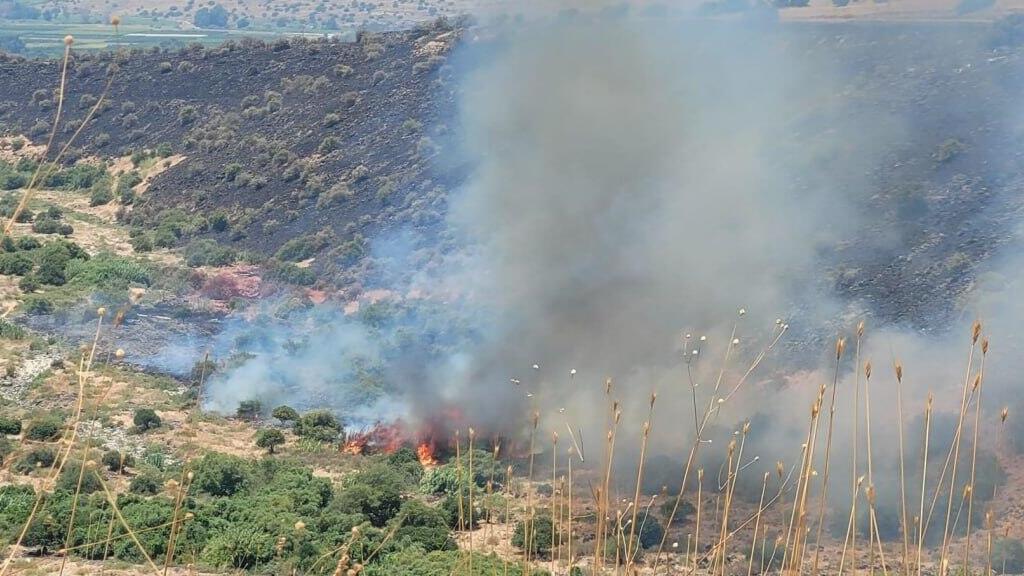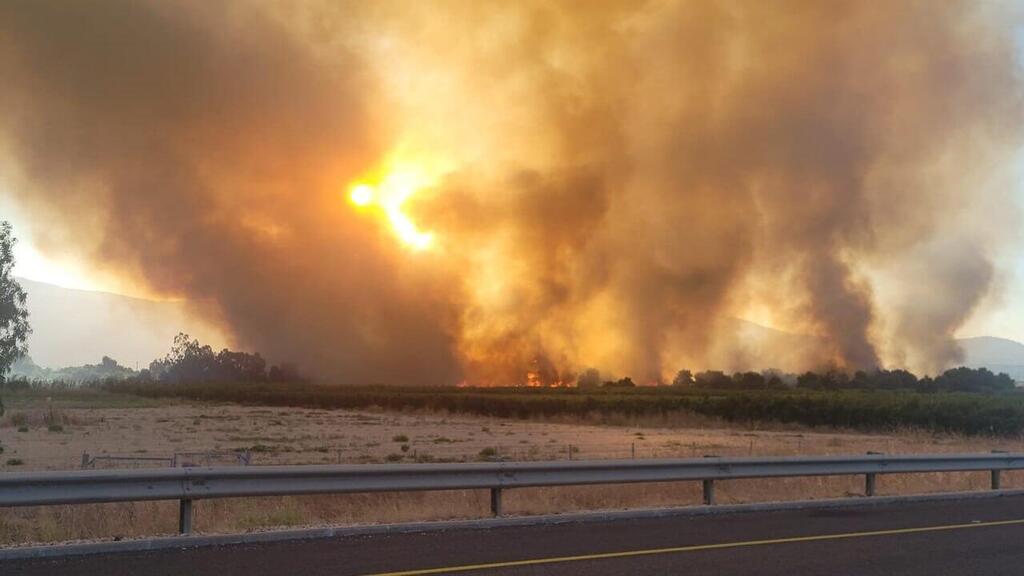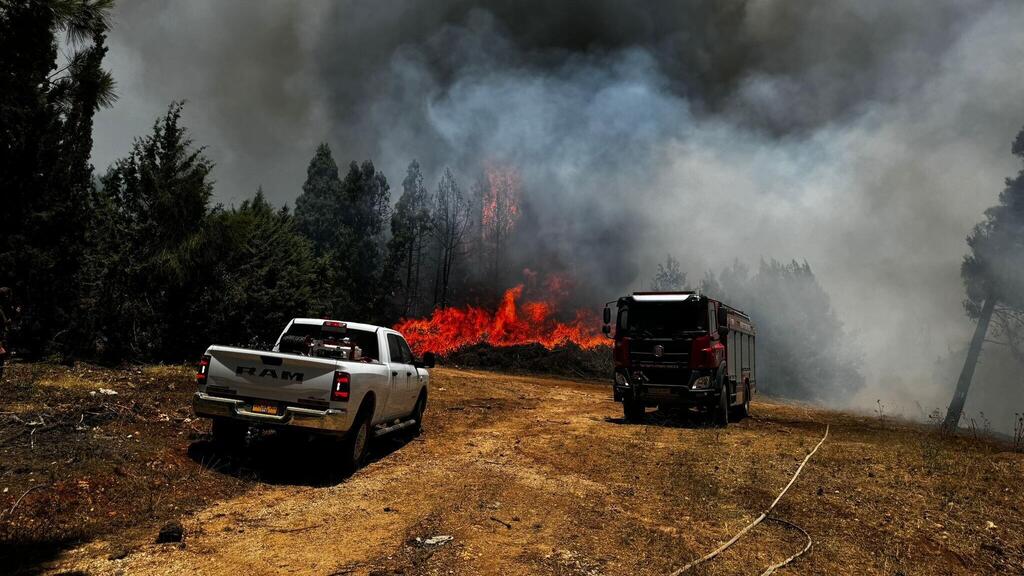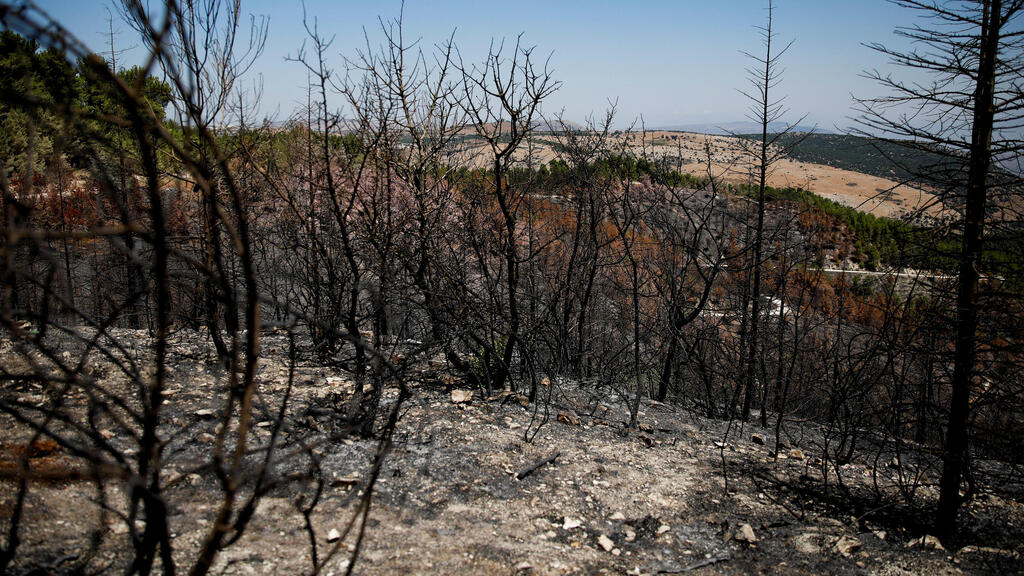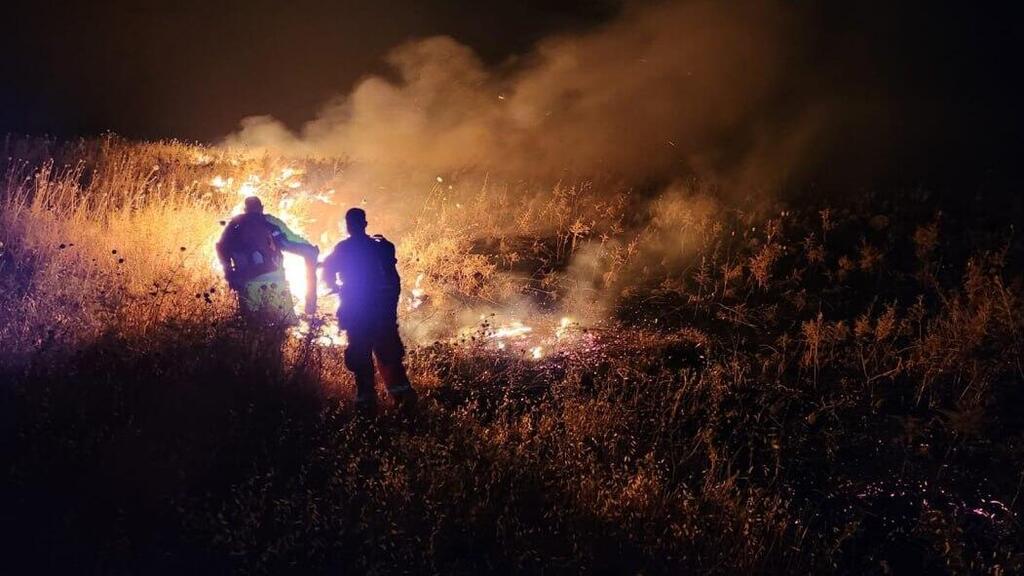Getting your Trinity Audio player ready...
Hezbollah's relentless rocket fire from Lebanon has set off a series of wildfires, leaving the Galilee and the Golan Heights, two of Israel's most scenic regions, shrouded in smoke and ash. The fires have caused significant environmental damage, turning lush landscapes into charred wastelands.
Earlier this month, Israel Nature and Parks Authority (INPA) rangers and firefighters fought for three consecutive days to control a fire threatening the Banias Nature Reserve, a major tourist destination.
The fire scorched large sections of the reserve, reducing the vibrant streambed to a gray and black wasteland. Thanks to their efforts, firefighters managed to save the famous hanging trail, which attracts millions of visitors to Israel's largest waterfall each year.
Since the beginning of the year, approximately 100 acres of the Banias Nature Reserve have been burned, equivalent to about 60 soccer fields. "The flames in the streambed reached heights of 20 to 30 meters," said Eran Haims, Director of the Upper Galilee Region for the INPA. "The heat was so intense that the water evaporated."
Despite repeated efforts to control the fires, embers hidden beneath heavy ash were reignited by warm breezes, prompting rangers and firefighters to engage in a grueling marathon against the flames. Their victory was short-lived as they rushed to address the next blaze sparked by Hezbollah's rocket fire or intercepted rockets in the area, now a "security zone" with limited protection. Another 100 acres of land burned in Tel Dan National Park, though main tourist areas and the habitat of the Persian fallow deer were spared.
For over ten months, Hezbollah militants have launched rockets at Israel's northern border region. Fires continue to rage, but this battlefront remains a secondary priority for the Israeli military and government. From October 7 until the beginning of this month, approximately 45,000 acres of nature reserves, national parks, forests, and open areas in northern Israel have burned. Across the country, a total of 76,100 acres have been lost to fire. Since the beginning of 2024, 59% of the burned areas are in the north, now largely blackened.
Haims, who assumed his role six months ago after 18 years with the INPA, has focused on preventing further fire damage and addressing the aftermath of military activity. "Each fire presents a different challenge," he said. "Sometimes it's an open-area fire spreading rapidly, while other times, like the Ramat Naftali fire, it's steep terrain requiring us to climb with heavy gear, making it physically exhausting."
Haims and the rangers are joined by INPA inspectors, firefighters, and volunteers, including cowboys and rapid response teams from the Upper Galilee and Golan, who physically protect endangered areas. "We're out here in the scorching heat, carrying leaf blowers on our backs, wearing fire-retardant uniforms, with helmets and radios blaring in our ears. Above us, we often hear interceptions and sirens," Haims said. "My thoughts are always on ensuring my team gets home safely."
The natural treasures of the Galilee and the Golan, celebrated in thousands of songs, would typically attract millions of visitors. But since October, many tourist sites in the region have been closed. The damage is evident along Route 90 on the way to Kiryat Shmona, through the reserve and forest of the Ramim Ridge. So far, around 3,820 acres in the Ramim Ridge area have burned, including 780 acres of nature reserves and 3,040 acres of forests, equivalent to about 2,000 soccer fields.
In the Golan Heights, the scars of a massive fire in the Yehudiya Nature Reserve are still visible, with 230 acres burned, including 153 acres in the Gamla area, where vultures are acclimatized. Rangers managed to evacuate the vultures from their enclosures, protecting them from the flames. Nearly 200,000 visitors come to the Yehudiya Nature Reserve and its surrounding open areas each year.
The Dishon River Nature Reserve, repeatedly targeted throughout the conflict, has seen 1,000 acres burned, with most damage occurring in the Har Avivim area, where 770 acres have been lost. Normally, this reserve hosts about 200,000 visitors annually, according to INPA estimates.
Mount Meron Nature Reserve, home to the Air Force's control tower, is frequently targeted by rocket fire from Lebanon. Since the start of 2024, about 33 acres of the reserve have burned in areas with dense forests, unique plant species, and hidden caves.
Despite challenges, this reserve has been relatively spared. Hundreds of thousands of visitors hike the area each year, camping in popular grounds, including along the Israel National Trail, largely deserted for nearly a year.
"Israel's northern sites typically welcome millions of visitors from around the country and abroad," said Orit Steinfeld, Head of the Audience and Community Division at INPA. "Many northern sites have been closed since the war began, and some have been damaged by the fighting. But in these tense times, most nature reserves and national parks across the country remain open for visitors, and we are doing everything we can to host as many travelers as possible in safe areas."
She urged Israelis not to give up on nature, especially during the summer holidays, in areas where it's safe to hike. "Nature will give you love in return," Steinfeld promised.
The INPA estimates that significant restoration efforts will be required, with substantial investments needed to give nature the tools and resilience to recover. The Wild Plants Seed Bank is preparing to supply seeds for plants that have been burned and eradicated, to be sown again in the soil that eagerly awaits them.
Efforts to monitor wildlife continue, with INPA professionals helping animals cope with the aftermath of Hezbollah's rocket fire. "Though the situation looks bleak, we have much hope for renewal," concluded Dr. Amit Dolev, North District Ecologist for the INPA. "The burned landscapes of nature reserves, parks, and forests are painful for all of us to see, but I want to give everyone a bit of hope. Most of the damage occurs in low vegetation, which will begin to recover by next winter. The trees damaged by intense fires and the wildlife will be harder to restore and take longer. However, we are fortunate to live in a country where many people care about nature, and together with our partners, we protect every tree, every animal, and every natural resource threatened by the flames."




